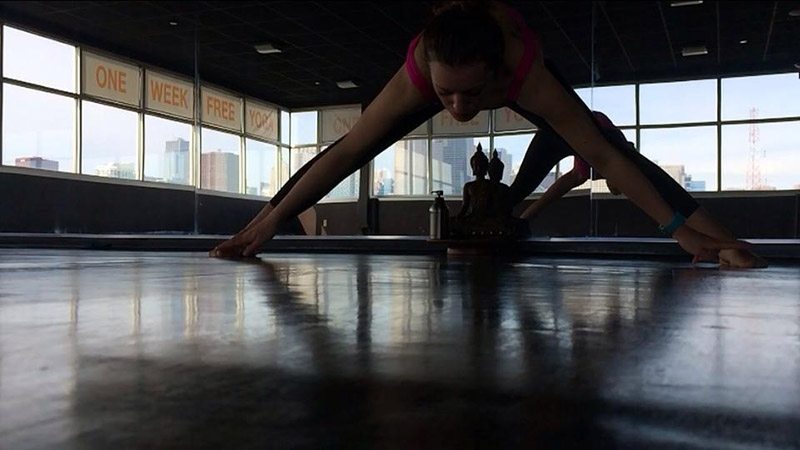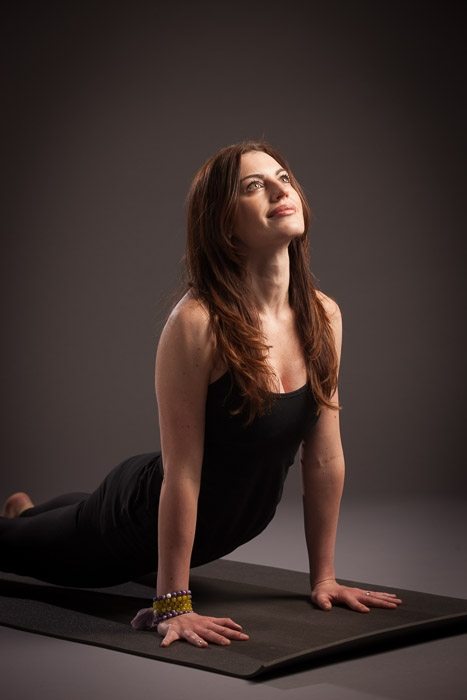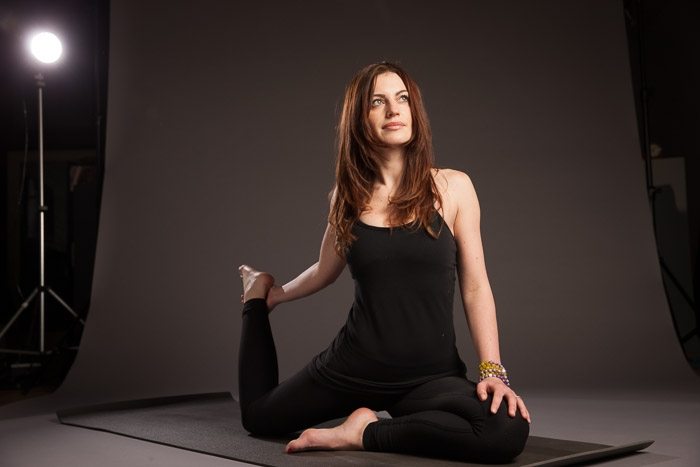Yoga for Runners: On Your Mark, Get Set, Om
Regular runners relish the endorphin high they get after finishing a good run, and often feel off-kilter the days they don’t. While those who hit the trail or treadmill on a regular basis may think they know the ins and outs of running, it is essential to learn or review how to protect your muscles and analyze your own practices to prevent injuries.
One of the best complements to running? Yoga. Running consists of repetition of the same movements in the legs and arms, and a good running posture means keeping your abs tight for a long period of time. Yoga offers a full-range of stretches and strengthening poses to increase flexibility and clarity of mind.
Dr. Dominika Hertsberg, a chiropractic physician, massage therapist, registered yoga instructor and current instructor at CorePower Yoga, suggests practicing yoga before and in between runs.
“Regular yoga practice improves strength, flexibility, lung capacity — because of its strong emphasis on yogic breath — and presence of mind,” says Dr. Hertsberg. “If you love running, yoga will take you to the next performance level.”
While recent research suggests static stretching before a run is not beneficial, Dr. Hertsberg recommends warming up with three to five sun salutations. The mountain pose stretches the spine and engages the core and glutes; forward fold opens the back and stretches the hamstrings; chaturanga cultivates focus, alignment and power; upward facing dog opens the hip flexors and chest; and downward facing dog stretches the hamstrings, calves and shoulders while strengthening the arms.
Dr. Nolan Lee, also a chiropractic physician, registered yoga instructor, certified acupuncturist, corrective exercise specialist and current CorePower Yoga instructor, suggests performing movements that are similar to the activity you are warming up for. Adding anjaneyasana — low lunge — to sun salutations while warming up stimulates the motion of running even more.
Each runner may find he or she prefers moving through sun salutations slowly to really engage the targeted muscle groups in each pose, or at a faster pace to build heat.
Yogic breathing, which will be used during the sun salutation warm up period, can be maintained throughout a run to stabilize breathing when the heart rate increases. If your body signals that you are pushing too hard, concentrating on breathing and going into prasarita — wide legged forward fold — and keeping your head below your heart will help you slow down your breath and heart rate while stretching your hamstrings and calves, according to Dr. Hertsberg.
After a run, to prevent muscle soreness and the onset of DOMS — delayed onset muscle soreness — Dr. Lee suggest engaging in light movements.
“Flowing through some yoga poses, such as in vinyasa, can be immensely helpful in maintaining circulation,” Dr. Lee says. “Keeping good circulation in those sore muscles is essential to help them heal, and light movement will help them heal properly. A longer held stretch can help relieve tightness of those overused muscles.”
In particular, the half pigeon or supine pigeon pose effectively stretch the piriformis that tighten up in runners.
It is not uncommon for avid runners to be uninterested in exercises that don’t offer intense cardio, or think they aren’t as good of a workout. Although yoga for runners doesn’t offer the same aerobic intensity as running, its flexibility-enhancing and strength-building benefits make it a stellar counterpart. Additionally, yoga can be practiced at any speed, and cardio moves can even be incorporated.
“It is important that you find the style of yoga that suits your personality and needs,” says Dr. Hertsberg. “Most importantly, yoga brings an amazing awareness to the body allowing for greater control of your breath and muscles. Sustained poses build strength and help to eccentrically activate muscles making them stronger and more flexible.”
Yoga and running also share a similar mental aspect — both require focus and often become meditative for the individual practicing.
“It is like the yin and the yang,” says Dr. Lee. “Running is very hard on the body, and many runners would benefit from giving their bodies more time to recover between runs. Yoga is a great activity for that purpose.”
Runners, check out these beneficial yoga poses, according to Dr. Hertsberg and Dr. Lee.
- Downward facing dog slows down heart rate and stretches the hamstring and calves to create leaner, stronger and more flexible muscles.
- Upward facing dog focuses on opening shoulders and improving posture (which aids breathing) and elongates and strengthens hip flexors.
- Triangle pose strengthens the core, thereby allowing the muscles of the pelvis, abs, hips and low back to work in sync. It also opens the inner thigh muscles that are chronically tight in runners, and strengthens knees and ankles.
- Pigeon pose is a great stretch for your outer hips. The piriformis is a stabilizer of the SI joint, so running takes a toll on it. Pigeon is a great stretch to loosen it back up.
- Kneeling warrior with quad stretch stretches the hip flexors.
- Regular and side planks strengthen the core and stabilize the outer hips.
- Separated leg forward fold stretches the hamstrings, calves and chest while strengthening the ankles and knees.
- Warrior II is great for strengthening the outer hips to help stabilize the legs and avoid knee injuries. It also opens up the inner thighs and groin area.
- Bridge pose activates ands strengthens the glutes and core. The glutes act as a powerhouse to help drive a runner forward.
Click here for graphics of these yoga poses and more.















